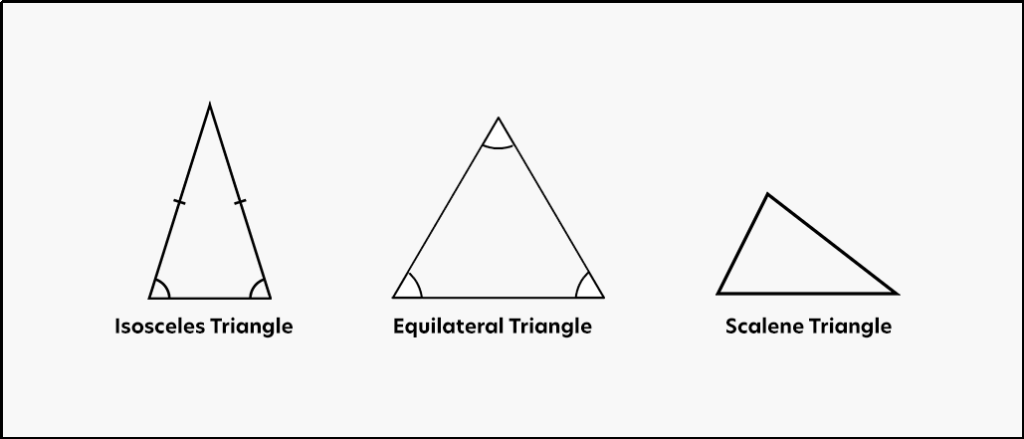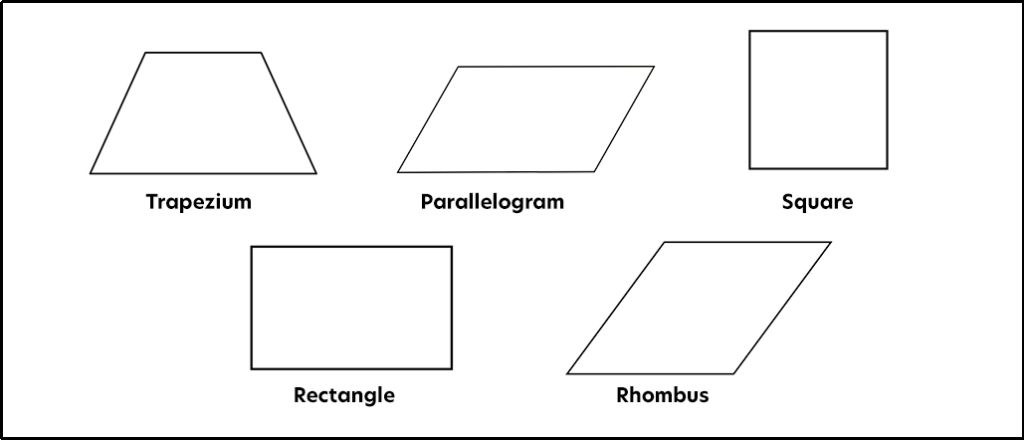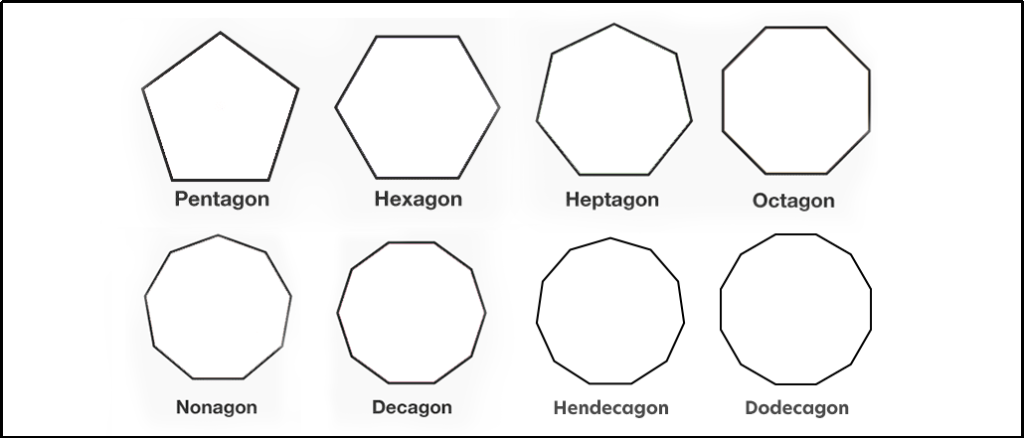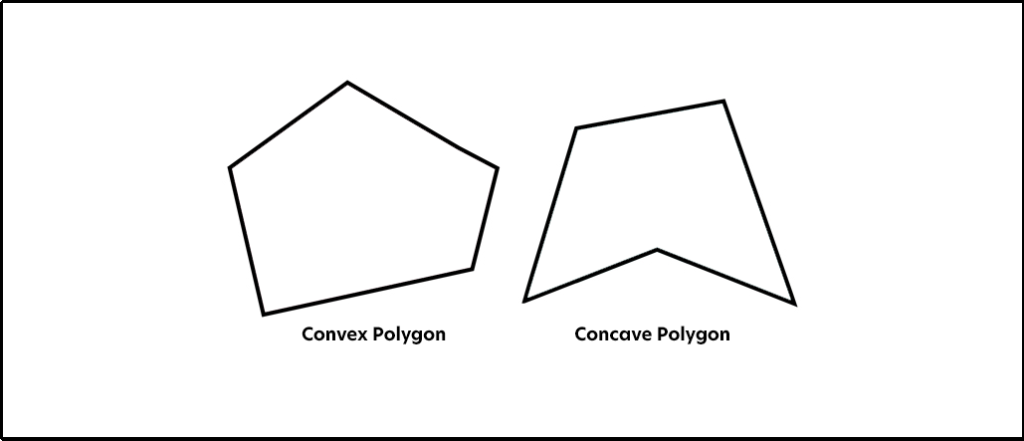News & Events
Understanding Polygon: Shapes, Types, Angles and More

A polygon is a two-dimensional figure that has at least three sides and three angles. In the Greek language, “poly” means many and “gon” means angles, which means a polygon is a figure which has many angles. Generally, a polygon is named after the number of sides it has. For example, a polygon with three sides and vertices is called a triangle. Similarly, a polygon with four sides is referred to as a quadrilateral, and so forth. Let's go into further detail about the various kinds of polygons.
1. Triangle
As we have mentioned above, a triangle is a polygon with three sides and three angles. According to the length of their sides, there are three types of triangles: Isosceles, Equilateral and scalene triangles.
Isosceles Triangles
An isosceles triangle is defined by its two sides of equal length. Also, the angles opposite to these two sides are equal, meaning two angles are of the same measure. So, suppose if one angle is given, you can easily find the other two angles by using the angle sum property.
∠A+∠B+∠C=180°
For example, if the measure of an angle is 60 degrees, you can calculate the equal angles by using the sum property.
80°+x+x=180°
80°+2x=180°
2x=180-80=100°
x=100/2=50°
Hence, the measure of the two equal angles of an isosceles triangle is 50°.
Equilateral Triangle
All sides of an equilateral triangle are equal, and since all sides are equal, the angles opposite to them are also equal. All three angles of an equilateral triangle are equal to 60 degrees. The sum of all three angles of an equilateral triangle is 180°, which means it follows the angle sum property, as mentioned above.
∠A+∠B+∠C=180°
60°+60°+60°= 180°
Scalene Triangle
All three sides of a scalene triangle are of different lengths, and its three angles are of different measures. But the sum of all the angles of a scalene triangle is 180°. So, we can say that it also follows the angle sum property.

2. Quadrilateral
A Quadrilateral is defined by four sides, four angles, and four vertices. However, all sides of a quadrilateral are not of equal length. Hence, there are different types of quadrilaterals based on sides and angles. Broadly, there are the following types of quadrilateral:
Trapezium
Parallelogram
Square
Rectangle
Rhombus
Here are the properties of different types of quadrilateral
| Trapezium | Parallelogram | Square | Rectangle | Rhombus | |
| Properties | One pair of opposite sides is parallel | Opposite sides are parallel and equal | All the sides of a square are equal, and opposite sides are parallel to each other | Opposite sides and parallel are equal | All sides of a rhombus are congruent, and opposite sides are parallel to each other |
| Perimeter | Area=1/2(a+b)/h where a+b is the sum of the parallel sides, and h is the height perimeter | Area= Base*height | Area= (side)^2 | Area= length*breadth | Area=1/2(d1*d2)where (d1*d2) is the product of the diagonals. |

3. Pentagon
A pentagon is characterised by five sides and five angles. The term “penta” means five, and “gon” means angle. All the sides of a pentagon are of the same length, and each angle of a pentagon measures 108 degrees.
A pentagon is formed with three triangles, so the sum of the interior angles of a pentagon is 3*180=540°. Another way to calculate the sum of the interior of a pentagon= (n-2)*180 where n is the sides of a pentagon (5)
So, we can calculate this as= (5-2)*180= 3*180= 540°
4. Hexagon
A hexagon is characterised by six sides and six angles. The term “hexa” means six, and “gon” means angle. Each angle of a hexagon measures 120 degrees, and all the sides of a hexagon are of the same length.
The sum of the interior angles of a pentagon is 4*180= 720°
We can also calculate the sum of the interior of a pentagon= (n-2)*180 where n is the number of sides (6)
So, it can be calculated as= (6-2)*180= 4*180=720°
Below are some other types of polygon and their properties:
| Name of the polygon | Side and vertices | Angle |
| Heptagon | 7 and 7 | 128.571 |
| Octagon | 8 and 8 | 135 |
| Nonagon | 9 and 9 | 140 |
| Decagon | 10 and 10 | 144 |
| Hendecagon | 11 and 11 | 147.27 |
| Dodecagon | 12 and 12 | 150 |

Polygons are classified as concave and convex and regular and irregular. Here is the difference between these.
Concave and Convex Polygon
A polygon in which one angle measures more than 180° is called a concave polygon. On the other hand, the measure of the interior angles of a convex polygon is always less than 180°. A regular hexagon, which has 6 sides, can be termed as the convex polygon.

Regular and Irregular Polygon
An equal number of sides and angles make up a regular polygon. In other words, we can say that a regular polygon is equiangular and equilateral. The best example is a square with equal sides and angles. On the other hand, an irregular polygon has unequal sides and unequal angles.
What you will learn about polygons in schools
Top CBSE schools in Barotiwala will provide you with comprehensive insights into polygons as well as other concepts of geometry. Their qualified teachers will help you understand mathematical concepts in detail by relating them with practical examples. So, you will get to learn about our mathematicians, mathematical principles, polygons, geometry and their application in your school, which will not only help you score good marks in the examination but also help you tackle, analyse and solve real-world problems.
The bottom line
Polygon is an essential concept of geometry which has widespread applications in architecture, computer graphics and even in creating art. So, understanding the fundamentals of the polygon will not only help in grasping mathematical concepts but also in several other disciplines. We hope this article will help you get a basic idea of polygons, their types and angles. To read more related topics, keep reading our writings and don’t forget to share your opinion in the comment section.

